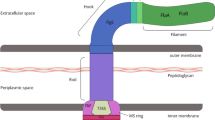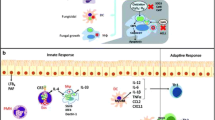Abstract
In this paper we report the occurrence of changes in the migration of certain isoenzymes of a cloned strain (MAV-CINVESTAV) ofEntamoeba histolytica. This strain was isolated from an asymptomatic carrier and showed an initial nonpathogenic zymodeme I. The transfer of polyxenic trophozoites from Robinson's medium (7% serum) to Jones' medium (30% serum) provoked changes in isoenzyme expression, resulting in the conversion of zymodeme I to a zymodeme that was similar to the XVII zymodeme except for two slow-running bands and a single fast-running band that were detected for hexokinase (HK). This XVII-like zymodeme reverted to zymodeme I when trophozoites were cultured under monoxenic conditions in TY1-S-33 medium (10% serum). When we cultured cloned strain MAV-CINVESTAV under axenic conditions in TY1-S-33 medium, trophozoites expressed a pathogenic zymodeme with two fast-running HK bands and a betaphosphoglucomutase band. In addition, phagocytosis and the ability of the trophozoites to destroy cell-culture monolayers were expressed only in trophozoites cultured under axenic conditions. The axenization procedure required the presence of liveFusobacterium symbiosum and is also described herein.
Similar content being viewed by others
Abbreviations
- HK:
-
hexokinase
- ME:
-
l-malate: NADP+ oxidoreductase
- GPI:
-
glucose phosphate isomerase
- PGM:
-
phosphoglucomutase
- P:
-
pathogenic
- NP:
-
nonpathogenic
- px:
-
polyxenic
- mx:
-
monoxenic
- ax:
-
axenic
References
Andrews BJ, Mentzoni L, Bjorvatn B (1990) Zymodeme conversion of isolates ofEntamoeba histolytica. Trans R Soc Trop Med Hyg 84:63–65
Brumpt E (1925) Etude sommarie de l'Entamoeba distar n. sp. amibe a kystes quadrinuclees, parasite de l'homme. Bull Acad Natl Med (Paris) 94:942–952
Clark CG, Diamond LS (1991) Ribosomal RNA genes of “pathogenic” and “nonpathogenic”Entamoeba histolytica are distinct. Mol Biochem Parasitol 49:297–302
Diamond LS, Harlow DR, Cunnick CC (1978) A new medium for the axenic cultivation ofEntamoeba histolytica and otherEntamoeba. Trans R Soc Trop Med Hyg 72:431–432
Edman U, Meraz MA, Rausser S, Agabian N, Meza I (1990) Characterization of an immuno-dominant variable surface antigen from pathogenic and nonpathogenicEntamoeba histolytica. J Exp Med 172:879–888
Mann BJ, Torian BE, Vedvick TS, Petri WA Jr (1991) Sequence of a cystein-rich galactose-specific lectin ofEntamoeba histolytica. Proc Natl Acad Sci USA 88:3248–3252
Mirelman D (1987) Ameba-bacterium relationship in amebiasis. Microbiol Rev 51:272–284
Mirelman D, Bracha R, Wexler A, Chayen A (1986a) Changes in isoenzyme patterns of a cloned culture of nonpathogenicEntamoeba histolytica during axenization. Infect Immun 54:827–832
Mirelman D, Bracha R, Chayen A, Aust-Kettis A, Diamond LS (1986b)Entamoeba histolytica: effect of growth conditions and bacterial associated on isoenzyme patterns and virulence. Exp Parasitol 62:142–148
Orozco E, Guarneros G, Martinez-Palomo A, Sanchez T (1983)Entamoeba histolytica: Phagocytosis as a virulence factor. J Exp Med 158:1511–1521
Orozco E, Suarez ME, Sanchez T (1985) Differences in adhesion, phagocytosis and virulence of clones fromEntamoeba histolytica, strain HM1: IMSS. Int J Parasitol 15:655–660
Robinson GL (1968) The laboratory diagnosis of human parasitic ameba. Trans R Soc Trop Med Hyg 62:285–293
Rodriguez MA, Hernandez F, Santos L, Valdez A, Orozco E (1989)Entamoeba histolytica: Molecules involved in the target cell-parasite relationship. Mol Biochem Parasitol 37:87–100
Sargeaunt PG, Williams JE, Grene JD (1978) The differentiation of invasive and noninvasiveEntamoeba histolytica by isoenzyme electrophoresis. Trans R Soc Trop Med Hyg 72:519–521
Sargeaunt PG, Baveja UK, Nanda R, Anand BS (1984) Influence of geographical factors in the distribution of pathogenic zymodeme ofEntamoeba histolytica: identification of zymodeme XIV in India. Trans R Soc Trop Med Hyg 78:96–101
Tannich E, Horstmann RD, Knobloch J, Arnold HH (1989) Genomic DNA differences between pathogenic and nonpathogenicEntamoeba histolytica. Proc Natl Acad Sci USA 86:5118–5122
Tannich E, Ebert F, Horstmann RD (1991) Primary structure of the 170 kDa surface lectin of pathogenicEntamoeba histolytica. Proc Natl Acad Sci USA 88:1849–1853
Vargas MA, Isibasi A, Kumate J, Orozco E (1990) Non-pathogenicEntamoeba histolytica: functional and biochemical characterization of a monoxenic strain. Mol Biochem Parasitol 40:193–202
Author information
Authors and Affiliations
Rights and permissions
About this article
Cite this article
Vargas, M.A., Orozco, E. Entamoeba histolytica: changes in the zymodeme of cloned nonpathogenic trophozoites cultured under different conditions. Parasitol Res 79, 353–356 (1993). https://doi.org/10.1007/BF00931822
Received:
Accepted:
Issue Date:
DOI: https://doi.org/10.1007/BF00931822




